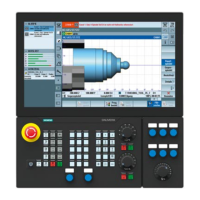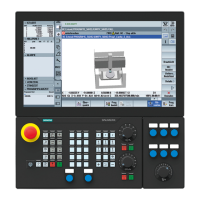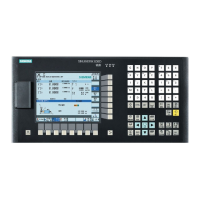Fundamental Principles of NC Programming
2.2 Language elements of the programming language
Fundamentals
2-16 Programming Manual, 10.2004 Edition, 6FC5 298-7AB00-0BP1
Constants
Integer constants
Integer with or without leading sign, e.g., for assigning a value to an address
Examples:
X10.25 ;Assignment of the value +10.25 to address X
X -10.25 ;Assignment of the value –.25 to address X
X0.25 ;Assignment of the value +0.25 to address X
X.25 ;Assignment of the value +0.25 to address X without leading "0"
X=-.1EX-3 ;Assignment of the value –.1*10-3 to address X
Note
If, in an address, which permits decimal point input, more decimal places are specified than
actually provided for the address, then they are rounded to fit the number of places provided.
X0 cannot be replaced with X.
Example:
Do not replace G01 X0 with G01 X!
Hexadecimal constants
Constants can also be interpreted in hexadecimal format. The letters "A" to "F" stand for the
digits 10 to 15.
Hexadecimal constants are enclosed in single quotation marks and start with the letter "H",
followed by the value in hexadecimal notation. Separators are allowed between the letters
and digits.
Example for machine data (see also "Programming Guide Advanced"):
$MC_TOOL_MANAGEMENT_MASK='H3C7F' ;Assignment of hexadecimal values to
;machine data
The maximum number of characters is limited by the value range of the integer data type.
Binary constants
Constants can also be interpreted in binary format. In this case, only the digits "0" and "1"
are used.
Binary constants are enclosed in single quotation marks and start with the letter "B", followed
by the binary value. Separators are allowed between the digits.

